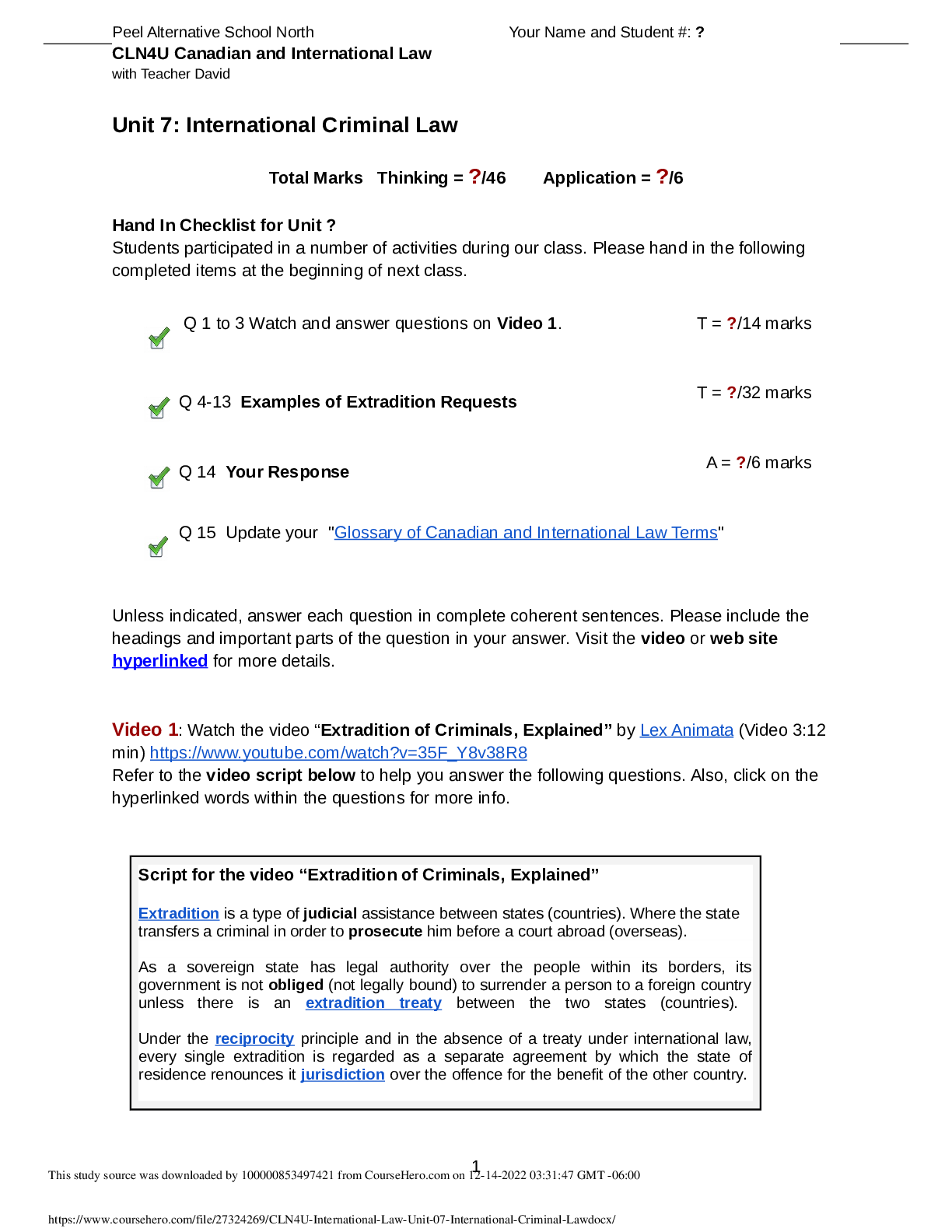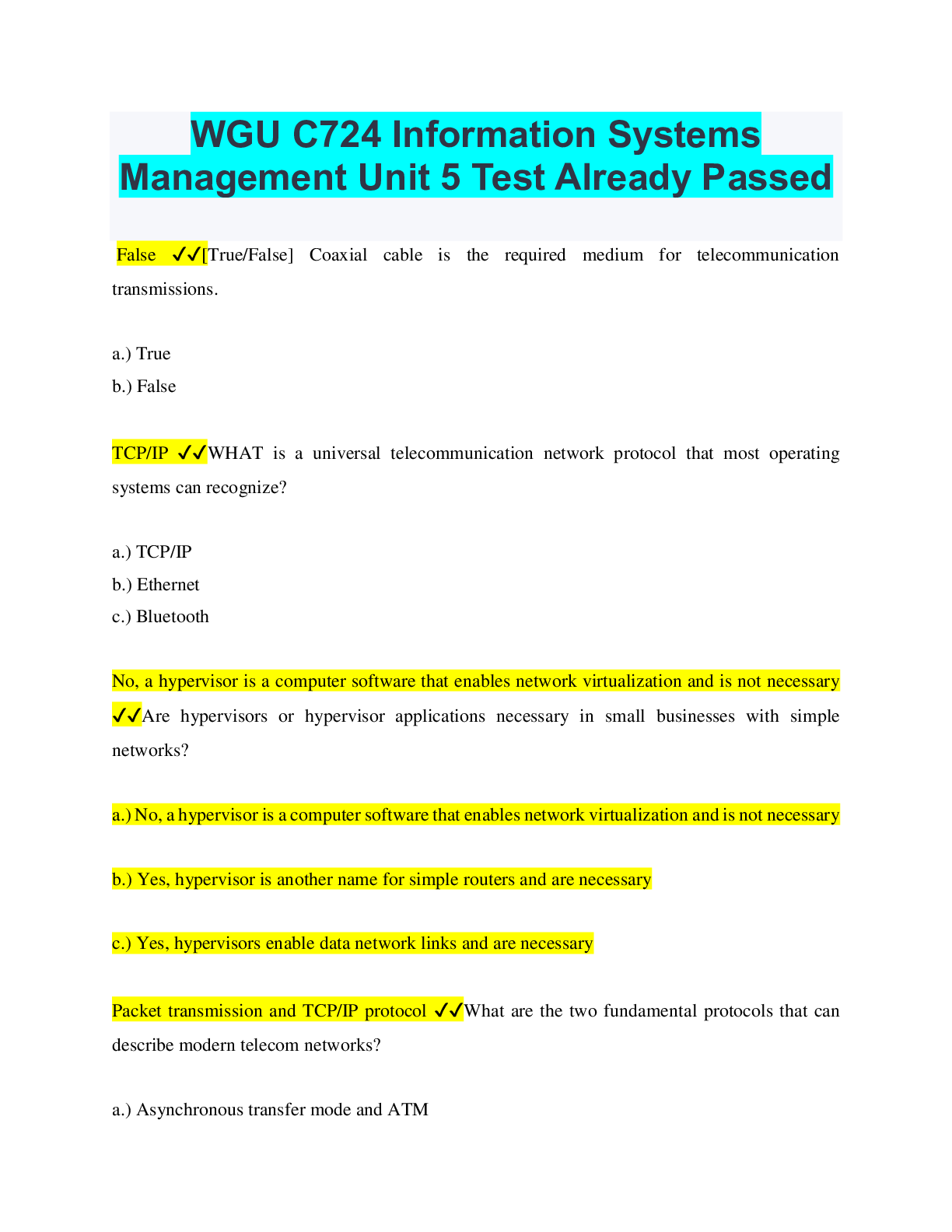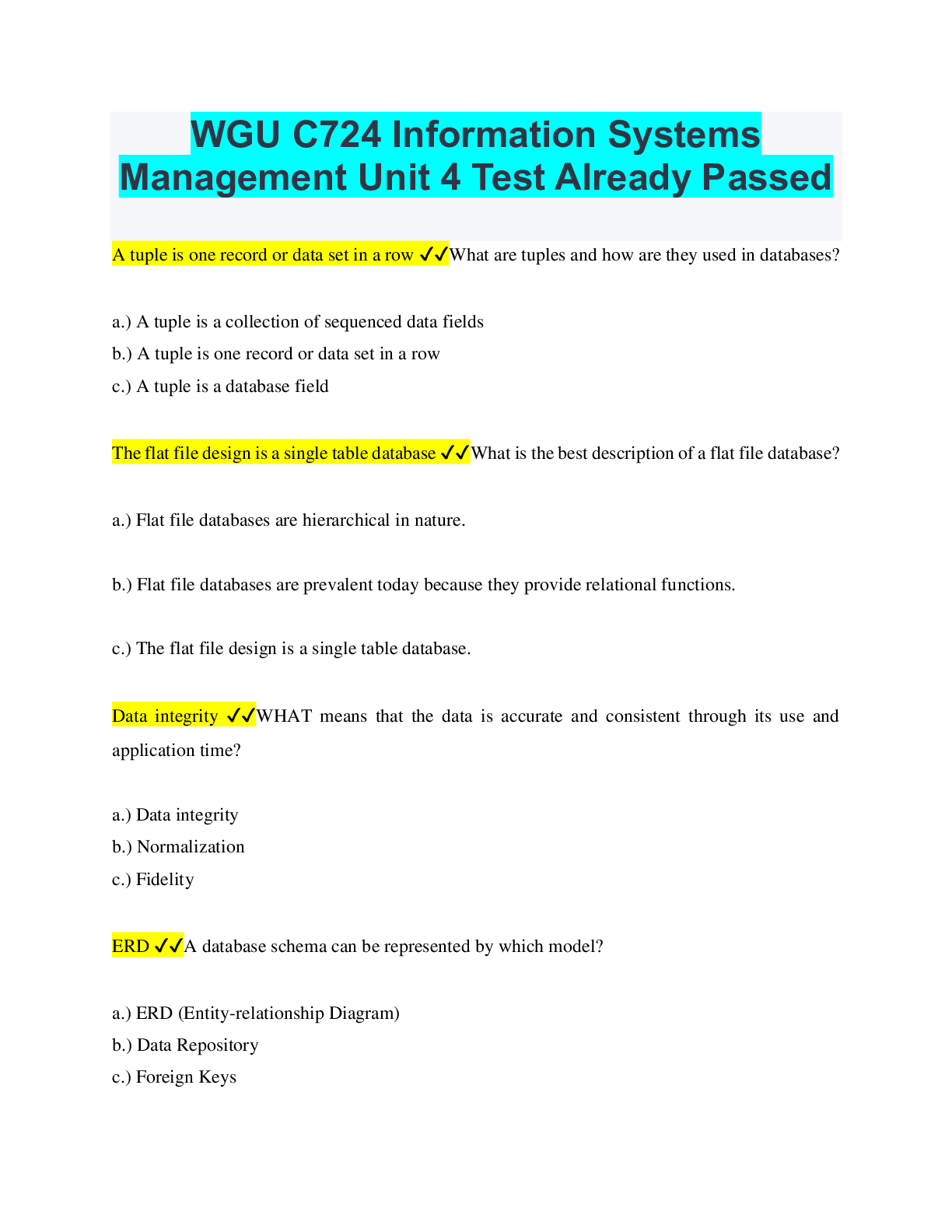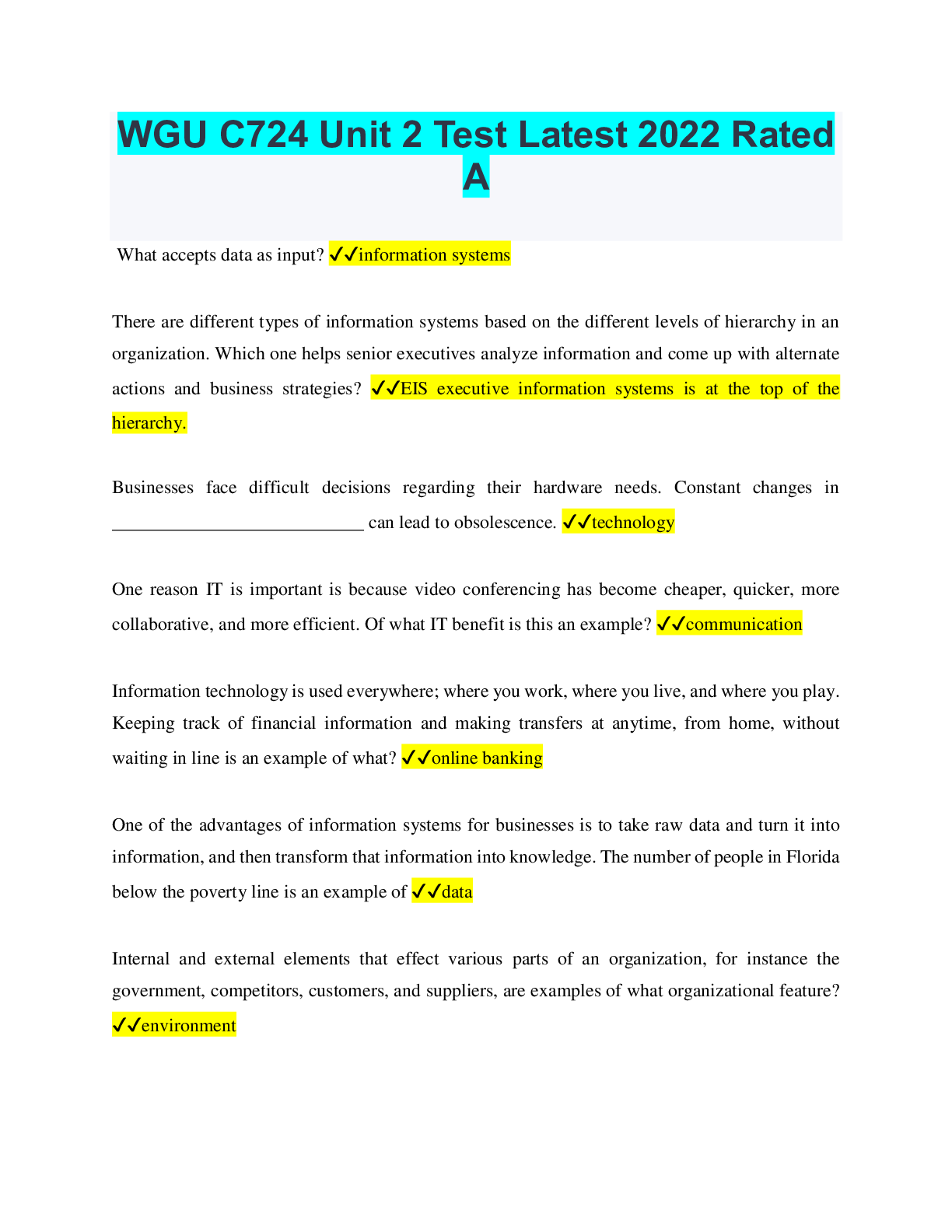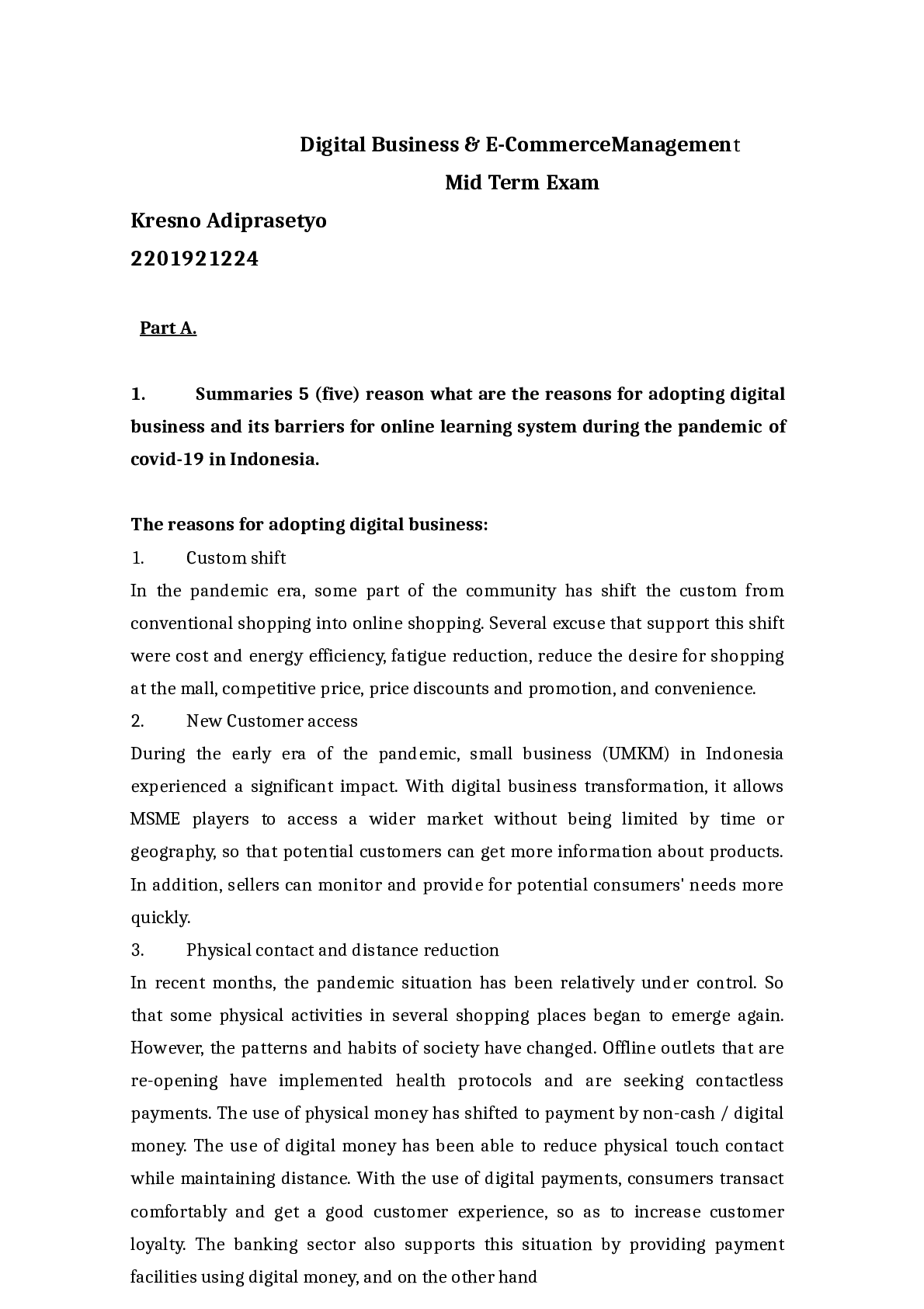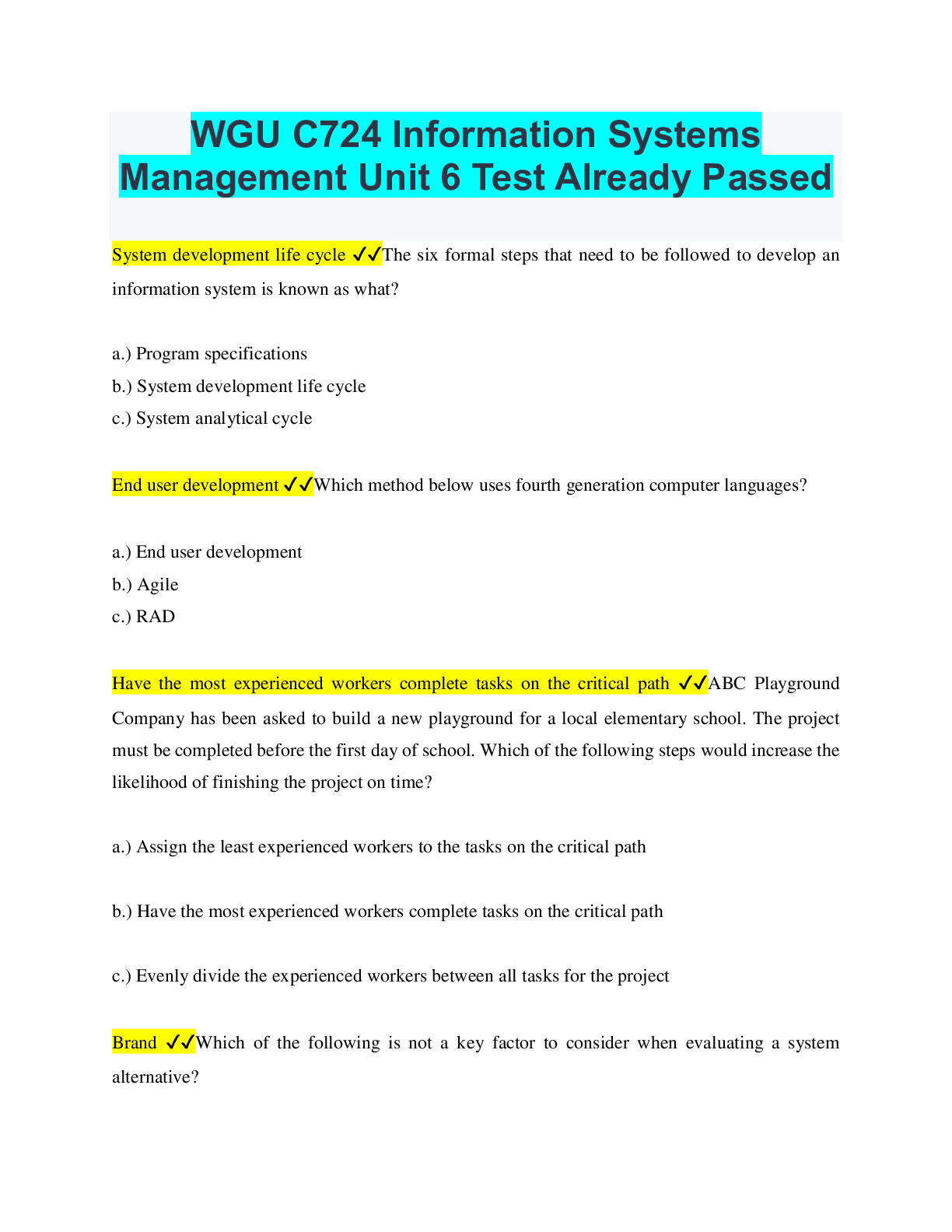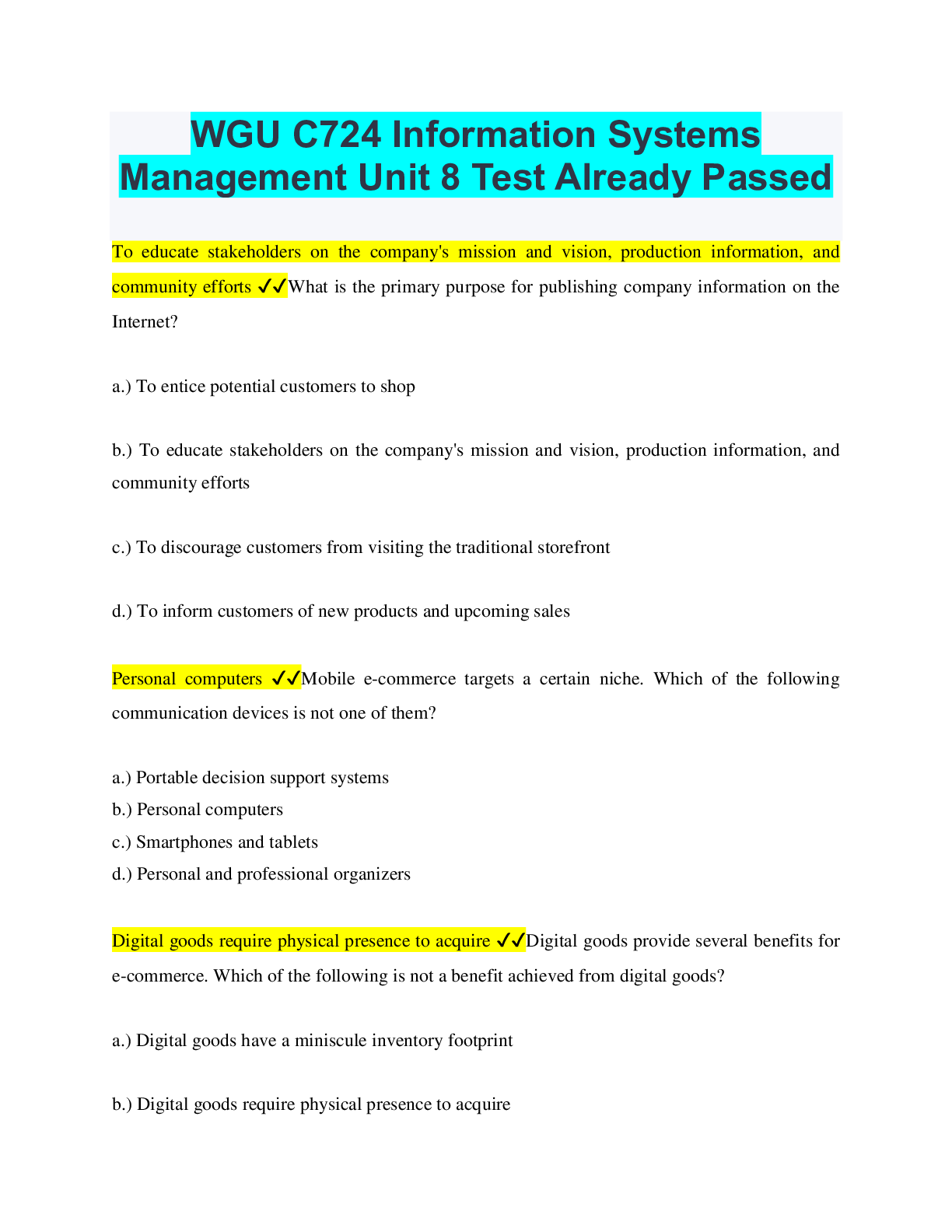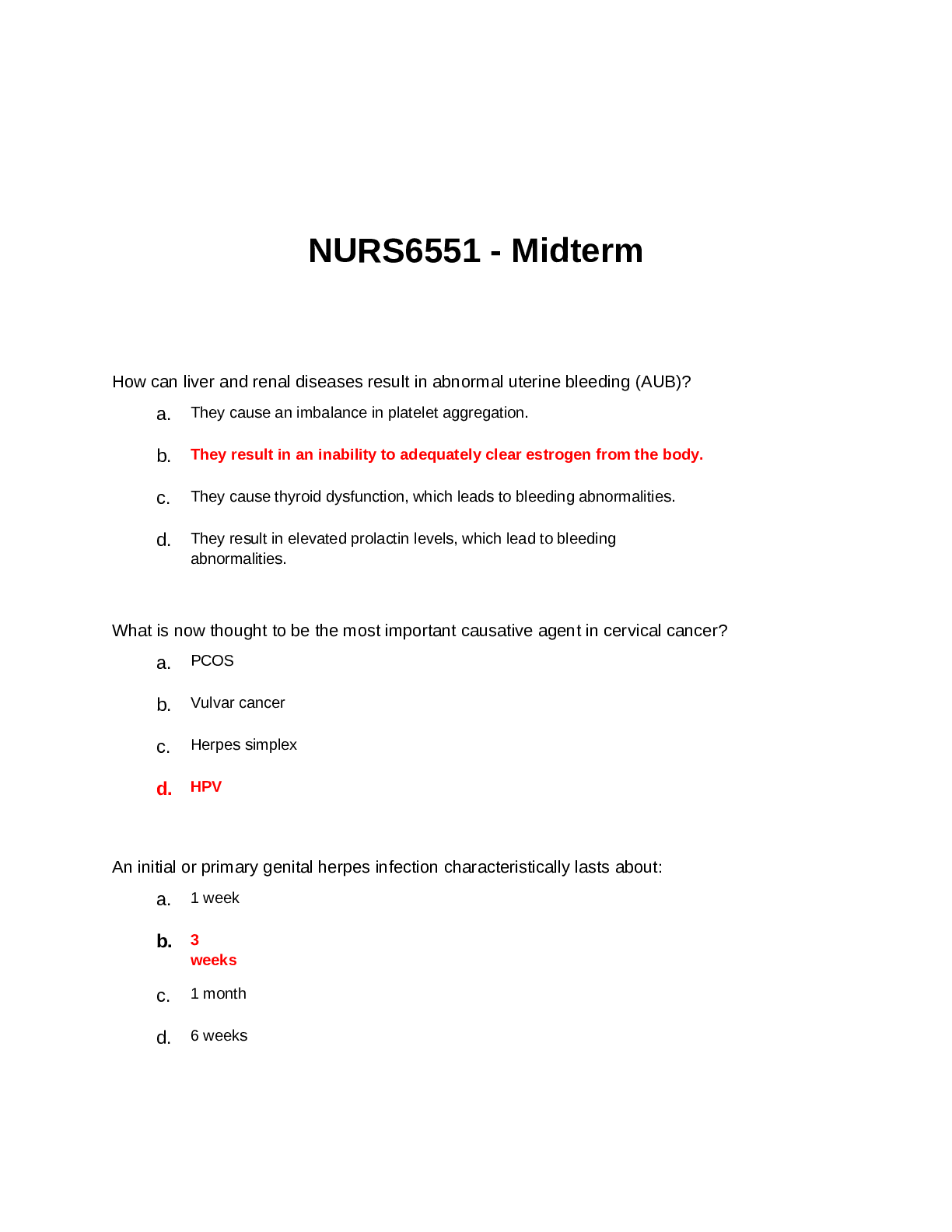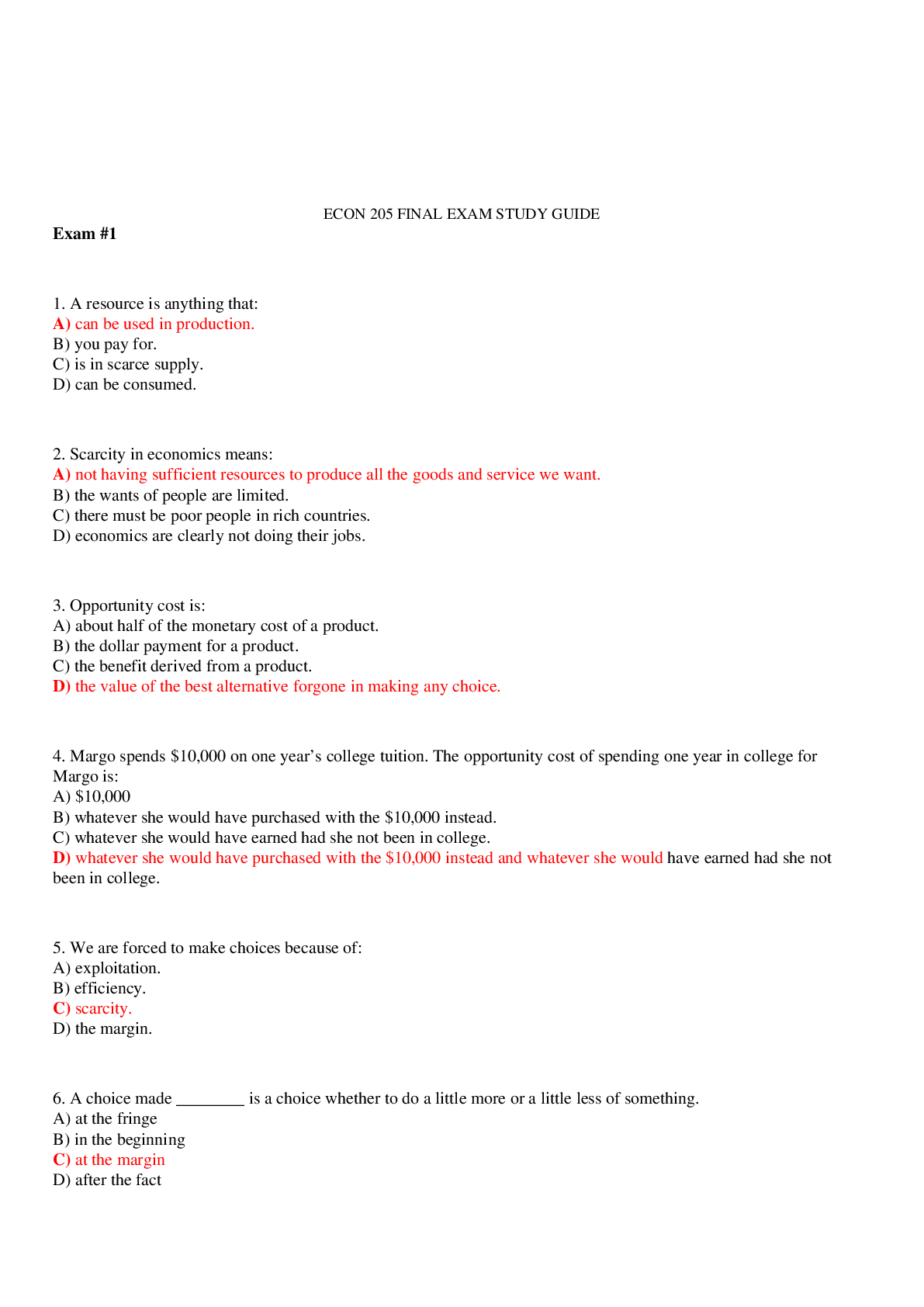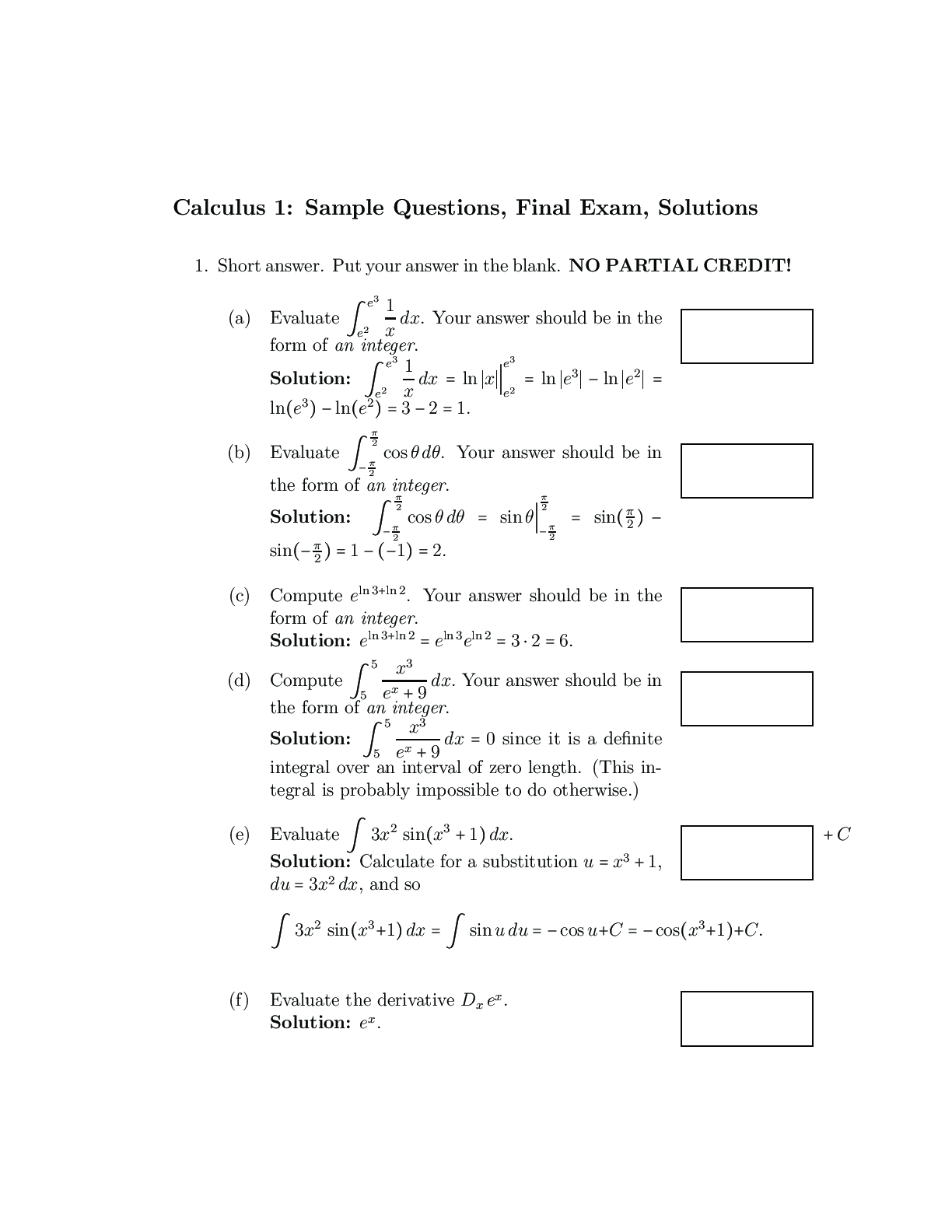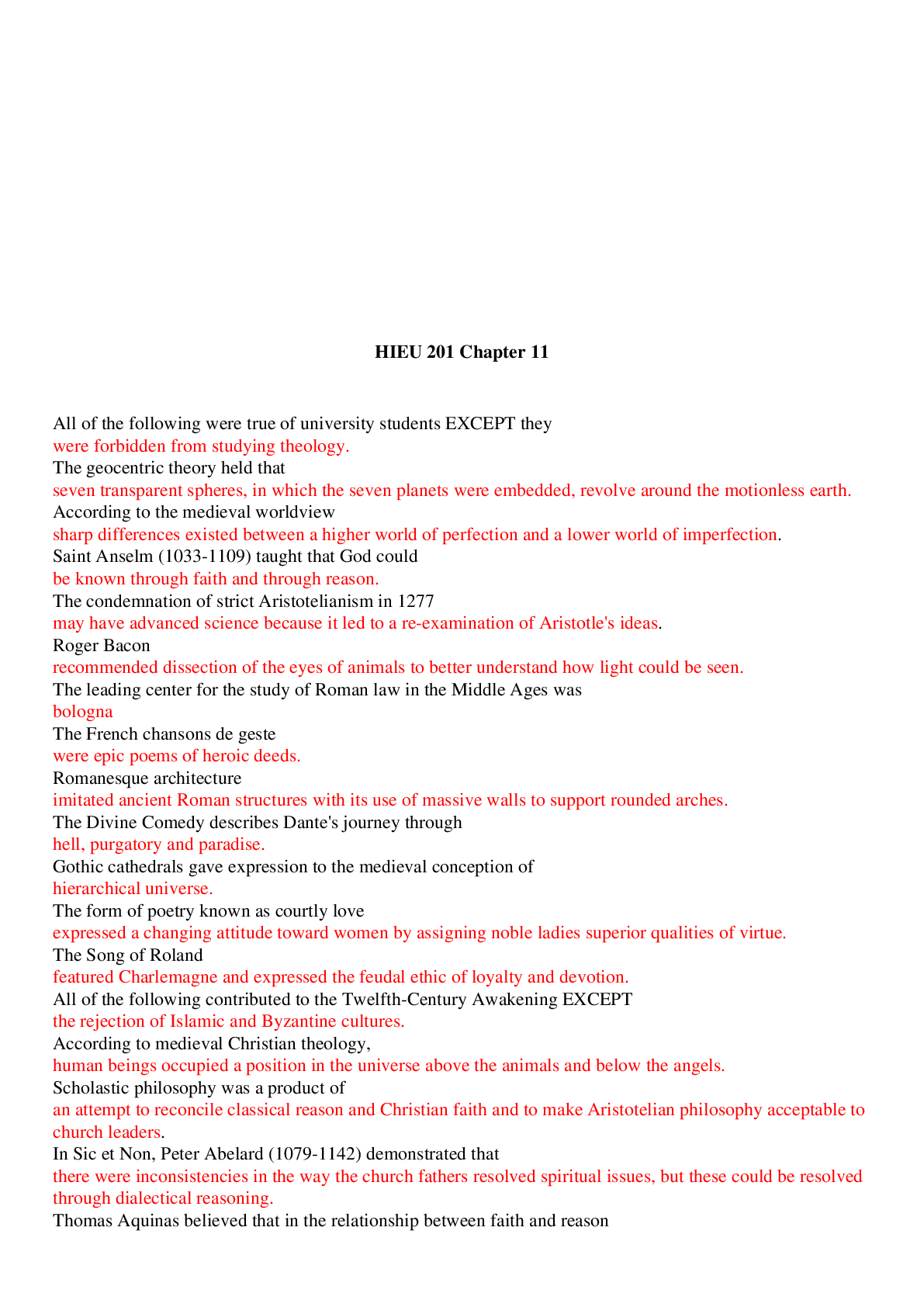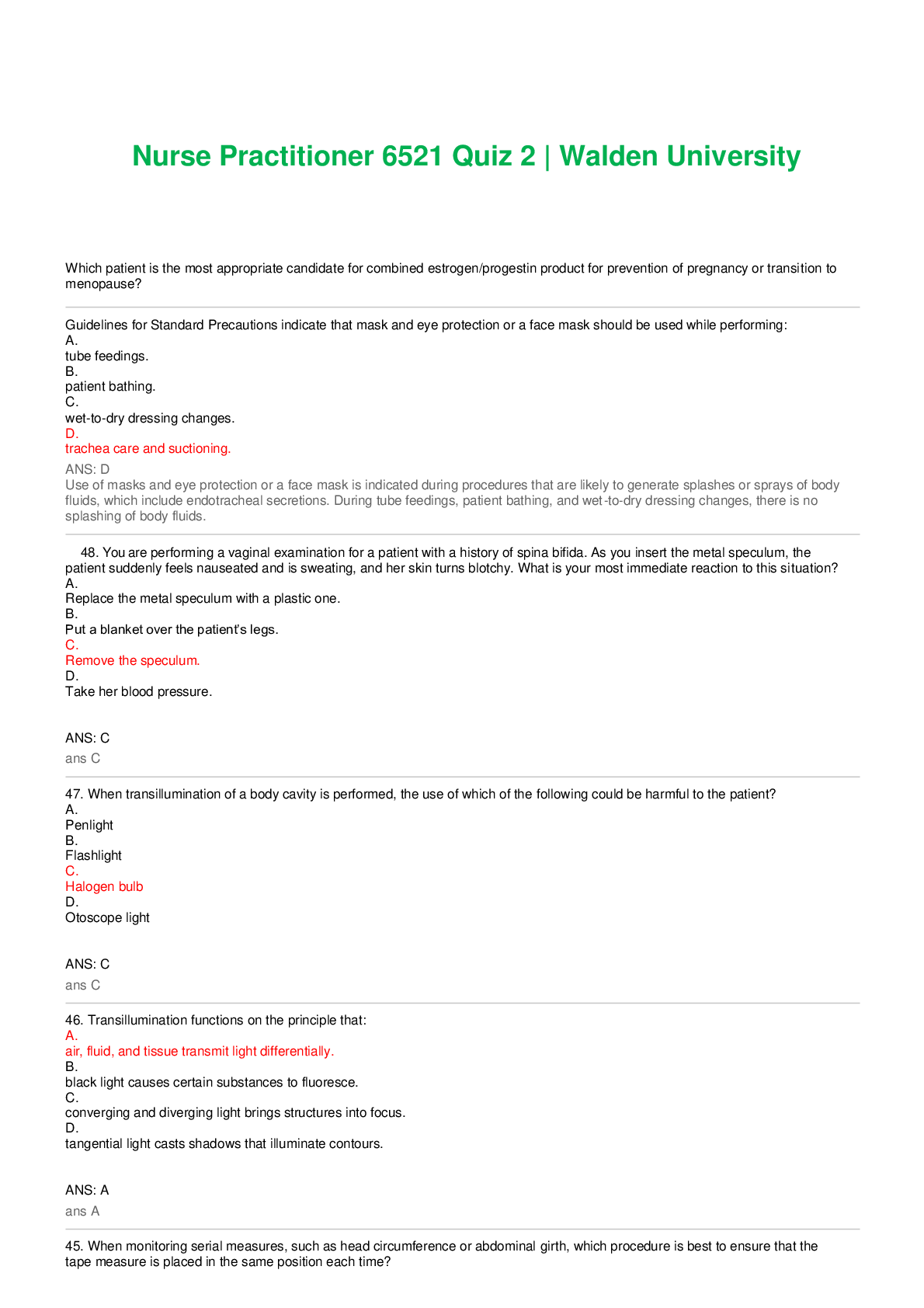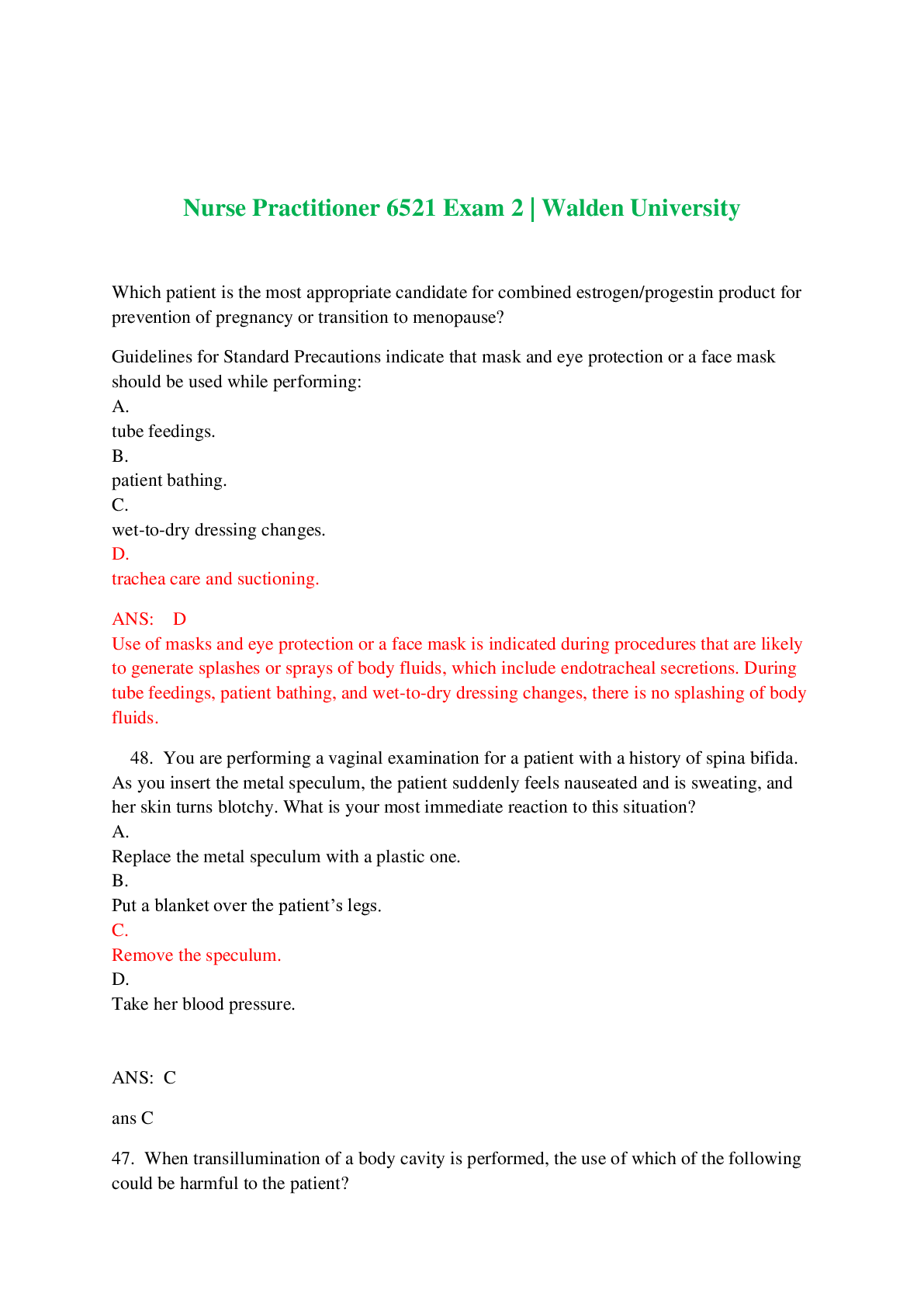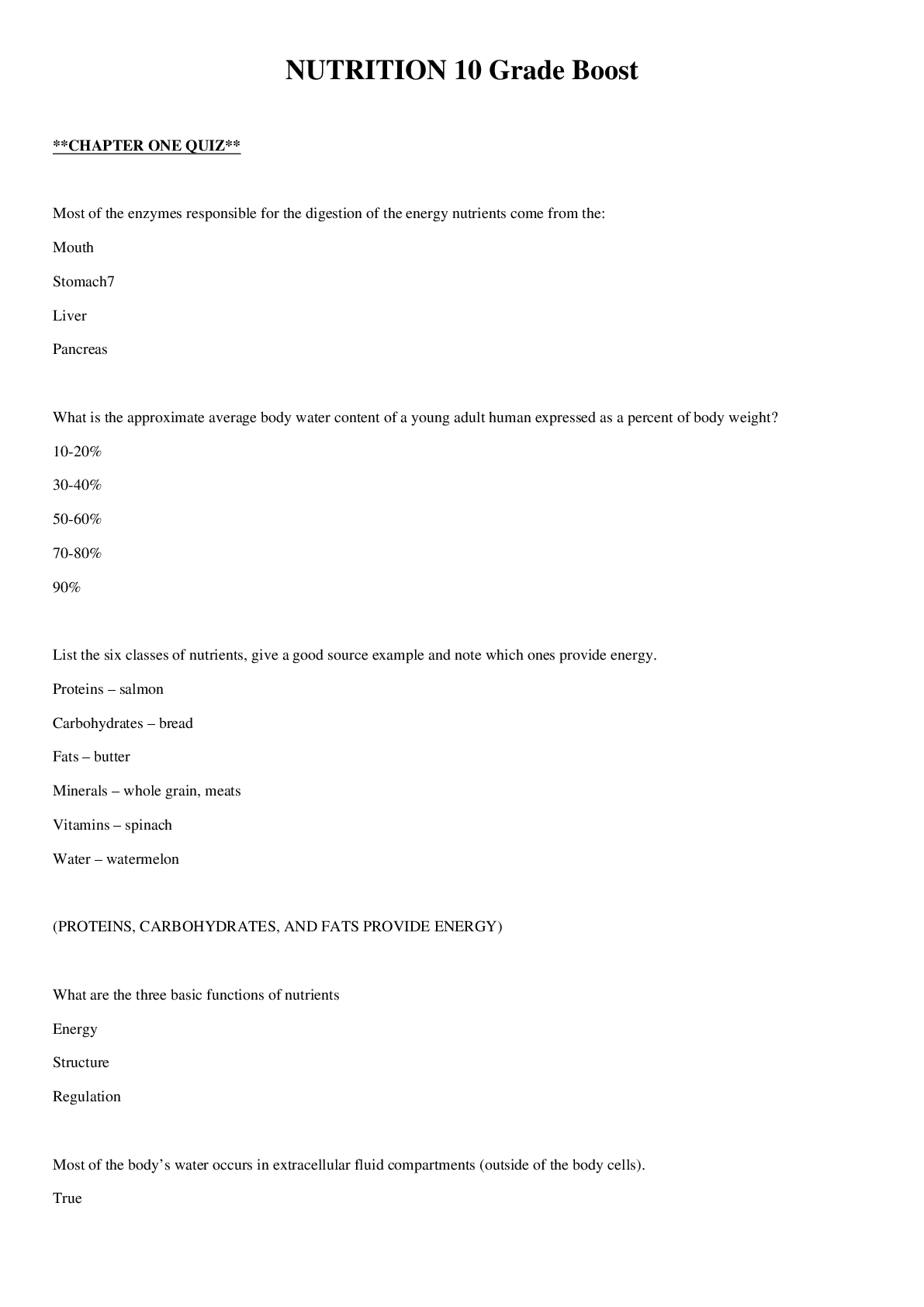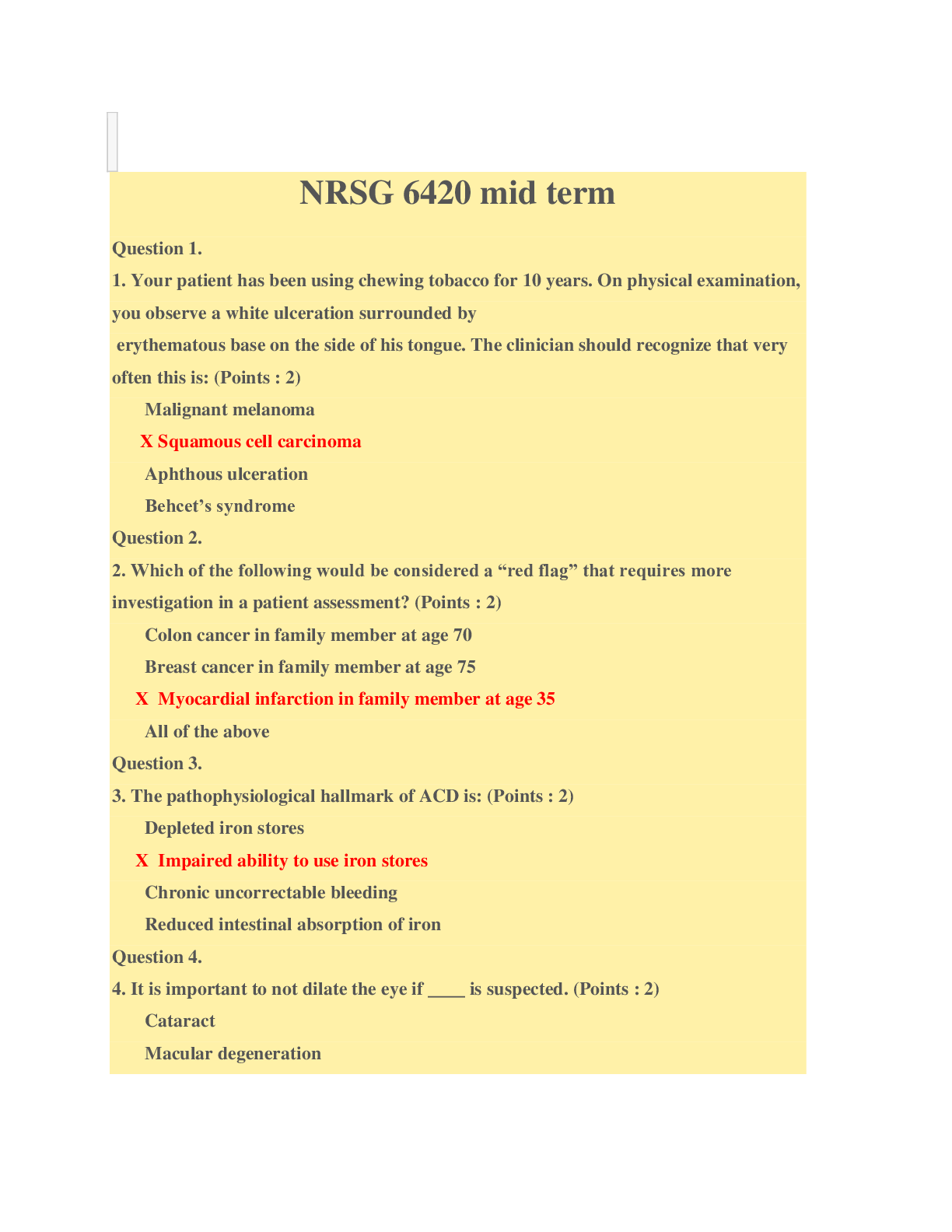Diagnostic Examination (Soil Science
Document Content and Description Below
1. Soil particles whose size is less than 1 micron. a. soil colloids b. sand c. silt d. organic matter 2. The orderly arrangement of atoms in the clay crystalline structure. a. lattice structure ... b. iron oxide c. kaolinite d. silicate 3. The process whereby ions adsorbed on the surface of soil colloids are exchanged for ions in the soil solution. a. anion exchange b. cation exchange c. ion exchange d. isomorphous substitution 4. A 25-gm soil saturated with 5 me Ca2+ has a cation exchange capacity equal to. a. 5 me/100 gm soil b. 10 me Ca/100 gm soil c. 20 me Ca/100 gm soil d. 25 me Ca/100 gm soil 5. The general form of nutrients taken up by plants. a. compounds b. ions c. molecules d. nutrients 6. An element which is an important component of plant cell wall. a. calcium b. magnesium c. nitrogen d. phosphorus 7. The microorganism responsible for the conversion of nitrite to nitrate. a. azotobacter b. mycorrhizae c. nitrobacter d. nitrosomonas 8. The conversion of organic to inorganic forms of nitrogen. a. immobilization b. mineralization c. nitrification d. volatilization 9. The loss of nitrogen into the atmosphere in the form of ammonia. a. ammonifaction b. dentirification c. nitrification d. volatilization 10. The element which fixes phosphorus at low soil pH. a. aluminum b. calcium c. iron d. manganese 11. It is also known as white alkali soil. a. alkaline b. saline c. saline-sodic d. sodic 12. It is also called as burned lime. a. CaCO3 B. CaO c. CaMg(CO3)2 d. Ca(OH2) 13. It is defined as the capacity of a liming material to neutralize acids expressed as a percentage of the molecular weight of CaCO3. a. percent base saturation b. percent calcium carbonate c. neutralization reaction d. relative neutralizing power 14. The following are beneficial effects of lime, except: a. it improves soil structure b. it decreases hydrogen-ion concentration c. it increases availability of micronutrients d. it stimulates microbial activities 15. The group of soil microorganisms which have the ability to photosynthesize. a. algae b. fungi c. nematodes d. protozoa 16. A group of microorganisms which can produce antibiotic compounds that kill other microorganisms. a. actinomycetes b. bacteria c. nematodes d. protozoa 17. It refers to the influence of one adsorbed ion on the release of another from the surface of colloid. a. cation exchange b. com [Show More]
Last updated: 2 years ago
Preview 1 out of 5 pages

Buy this document to get the full access instantly
Instant Download Access after purchase
Buy NowInstant download
We Accept:

Also available in bundle (1)

BIOLOGY ECOLOGY
Download solved Soil Science past papers at a quality price and score quality grades. Thank you.
By Wanjiku 2 years ago
$30
5
Reviews( 0 )
$1.00
Can't find what you want? Try our AI powered Search
Document information
Connected school, study & course
About the document
Uploaded On
Oct 28, 2022
Number of pages
5
Written in
Additional information
This document has been written for:
Uploaded
Oct 28, 2022
Downloads
0
Views
81

